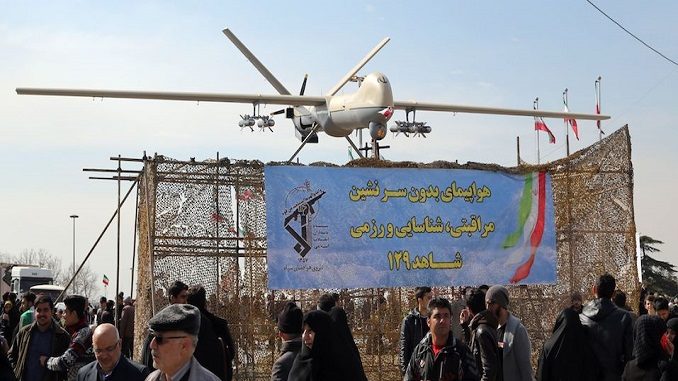
When Russia unveiled its Orion-E drone at the International Aviation and Space Salon MAKS-2017, near Moscow this summer, it bore a striking resemblance to an Iranian “Shahed” (UAV) already flying, Foreign Policy reports.
“Orion and Shahed look very much alike,” said Samuel Bendett, an associate research analyst at the Center for Naval Analyses’ International Affairs Group, speaking Thursday at the Center for Strategic and International Studies (CSIS) in Washington, D.C.
The aviation conference where the Orion drone debuted was designed in part to bring together Russian officials and potential foreign business partners.
“Russia has some operational drones already and is developing multiple unmanned systems for land, sky, and sea, but many are at a relatively early stage. The country is focused on improvements in drone intelligence, speed, flight time, and the ability to gather drones in swarms,” Bendett said.
Working with foreign countries has been part of Russia’s strategy to catch up to advanced drone programs in the United States and China. Russia has cooperated with Israel, for example, as a strategic play to learn fast. There is no official confirmation of collaboration between Russia and Iran on the Orion drone, Bendett cautioned, though the two countries cooperate already in the war in Syria.
“Iranians travel to Moscow on a regular basis. Perhaps they shared. Developing drones based on foreign designs can be faster than developing the technology from scratch. If you’re trying to catch up, you can use off-the-shelf stuff, you can emulate, you can reverse-engineer,” he said.
According to unconfirmed information, after seeing the performance of Shahed-129 MALE UCAV in Syria, Russians became very interested in ToT from Iran and thus began project Orion-E.
Although there is no information on whether Moscow has acquired any MALE UCAVs from Tehran, practical experience of operating such equipment, especially in a war zone, is of great interest to the Russian military and industry as they are in the early phase of testing new drone types. Marking their first UCAV on this size and MALE capable, Russia can even export the unarmed variant based on the agreement.
